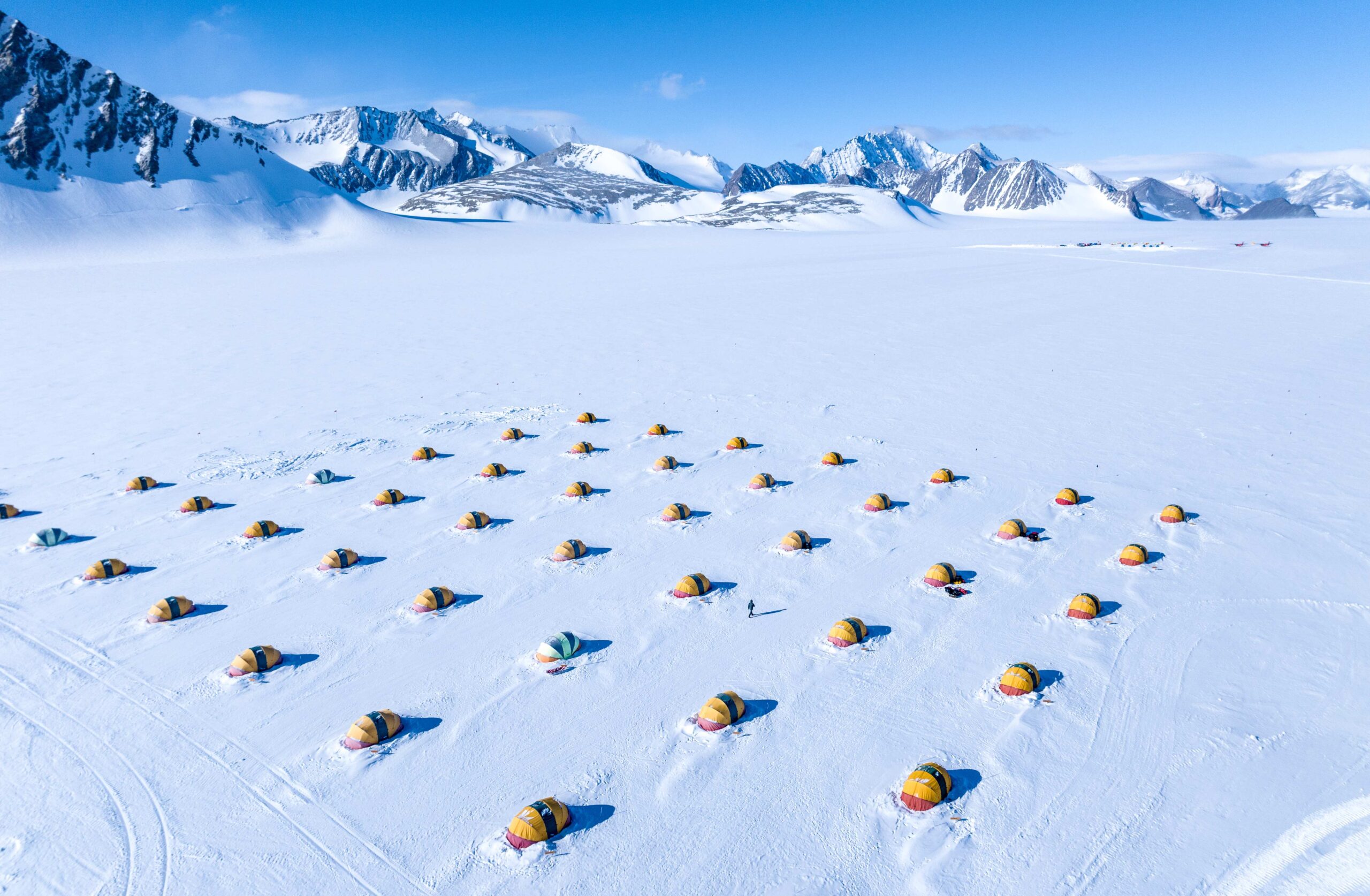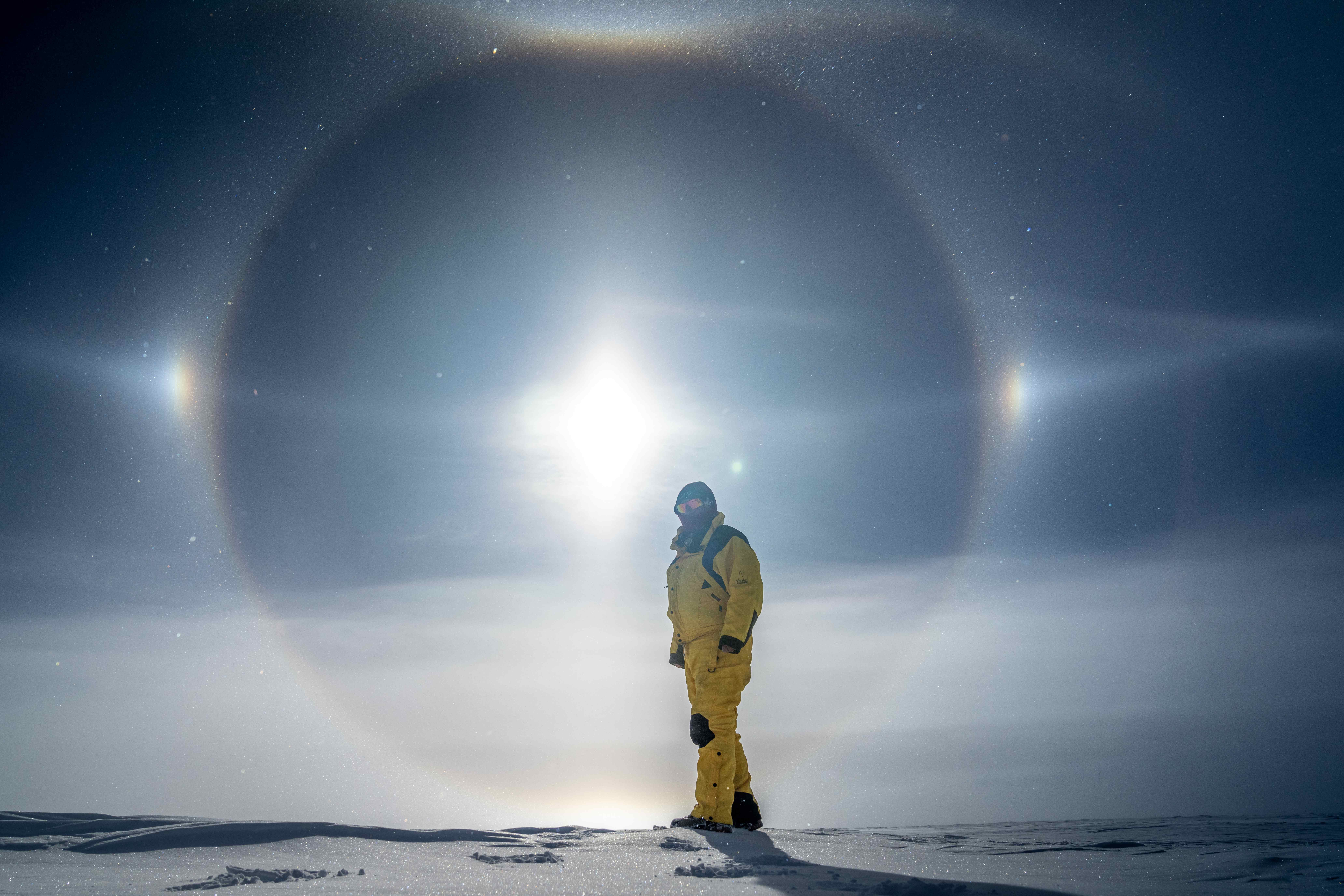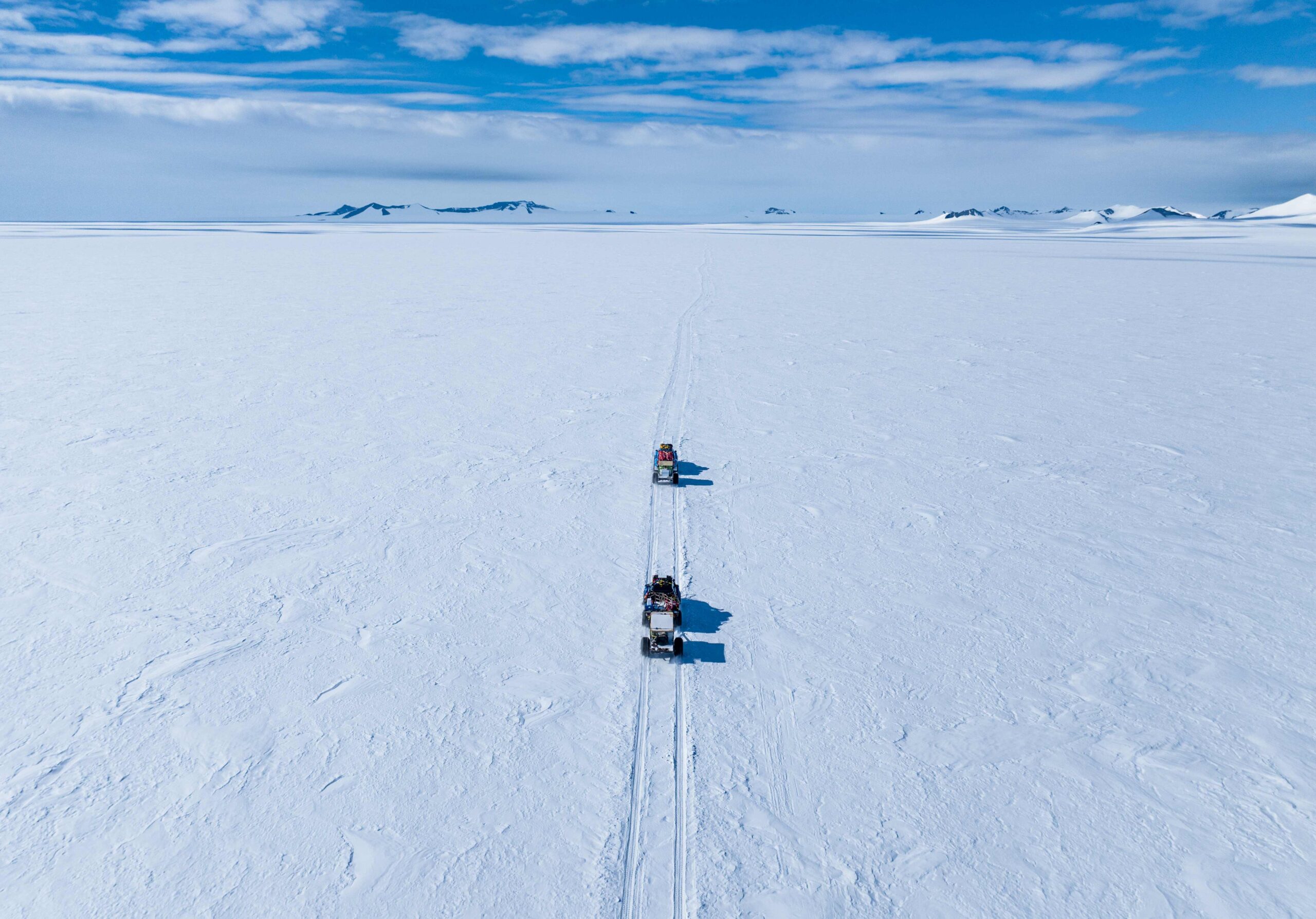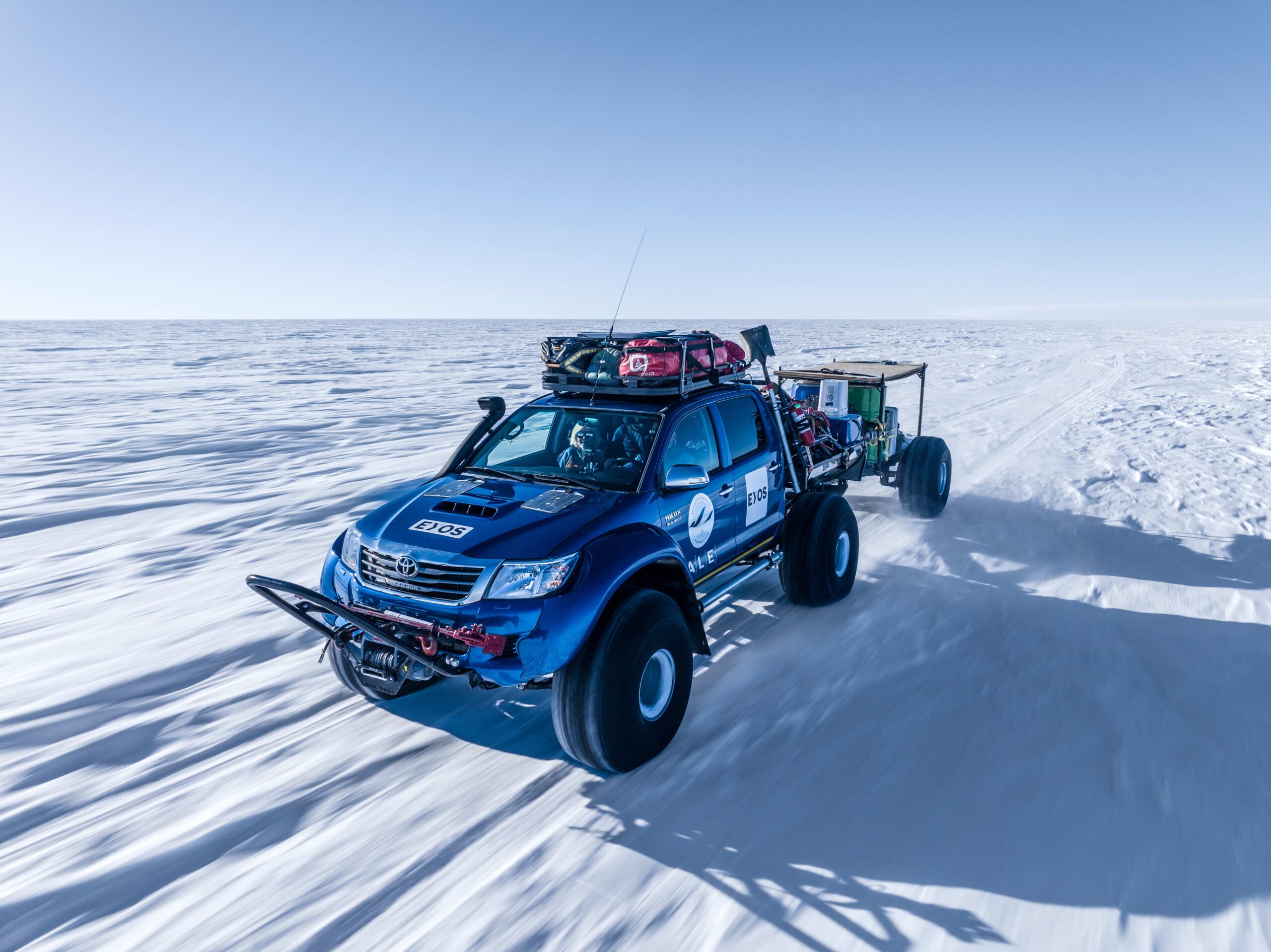Over two weeks, photographer & videographer Stein Retzlaff traversed the iconic landscape of Antarctica’s interior in a road trip like no other. He and a team used custom all-wheel drive vehicles to reach what is perhaps the world’s most exclusive destination: the Geographic South Pole. Fresh off the polar plateau, Stein joined EYOS for a conversation to share stories from his epic expedition traversing the Antarctic. Join us to hear what it’s like to adventure from coast to pole.
Ready to begin your own once-in-a-lifetime private Antarctic overland expedition? Contact [email protected] for details.

- Can you tell us any interesting details about the Hilux capabilities? What made the cars capable of driving? Was there a road or a route they were following? How did they know where to go?
The Toyota Hilux is one of the most impressive vehicles I’ve been in. For this trip, a company called Arctic Trucks out of Iceland strengthened and re-profiled the whole chassis, adding all-new suspension and an all-terrain package. All in all, nearly 80% was updated and the result was an extremely capable vehicle.
One of the super interesting things about the trucks from my perspective was how often they got out to change tire pressure. Every time the snow conditions changed (and we experienced all sorts of different snow conditions) they would adjust the air pressure. At one point we even went down to 1 psi, so the tires were essentially flat.
Our route was the South Pole Overland Traverse, a spot highway mapped out with LIDAR to make things as safe as possible for the clients. This technology helped to map out the best course of action and to avoid any crevasses. This is super critical considering that for about 30% of the trip, we were in whiteouts where you just couldn’t see absolutely anything and there were zero reference points.

- What were the most challenging conditions you faced on your journey to the pole?
We had a huge distance to cover. Our biggest day was 387 kilometers in one drive. Even going from Union Glacier to the South Pole was about 1,200 kilometers. And all along the way the snow conditions were the biggest challenge. There was a lot softer snow this year than in years past because the environment is certainly changing there; West Antarctica is getting warmer and East Antarctica is getting colder. This type of snow makes the traverse trickier. We got stuck one time and had to use the winch to pull the other truck with another vehicle that was in a good solid spot. Luckily, we worked super seamlessly to pull it out.

- What was the experience of camping in the interior? What did you eat? How cold did it get at night? What did a typical day look like for you and the team?
For our daily routine, we woke up, had breakfast at 800, ate some oatmeal, and then had some coffee or what or tea before we started breaking down the whole camp. And then we got in the vehicles around 930. From there we would begin to drive through some of the most otherworldly landscapes I’ve ever seen. The conditions began at -5 and -15 with no wind, but as we gained elevation and continued towards the South Pole, you could see the difference. The thermometer and the car started dropping and it got down as low as -36. But for the most part, when we were on the interior at between 8,000 and 9,000 feet, it was probably consistently hovering around -30. We were super lucky to not have much wind for most of the trip and were super warm (sometimes even too warm) in the tents.
Life at one of our stops, Union Glacier, was incredibly impressive. What a camp! It’s a tent city in the middle of Antarctica with super amazing staff and people. The food is outstanding and your access to this beautiful mountain range right around is unbeatable. Plus, it’s a melting pot for some just extremely interesting individuals and you meet people from all around the world.
Overall, camping in the interior was amazing and far more comfortable than you would expect. I would have never imagined sleeping in a nice tent at the South Pole. We even had Starlink and were able to stream Netflix. For food along the way, the chefs prepared real food by air packing it and then freezing it. So to make food we pretty much put it in a boiling pot of water and then had a proper meal in the middle of Antarctica. It was really good and pretty surreal to have that there.

- Did the expedition change your appreciation of the early explorers at all? What were your thoughts on the likes of Amundsen and Scott after visiting the pole?
Oh, absolutely. I had been reading so much about early explorers and the race between Amundsen and Scott in preparation for this. Their journeys are unimaginable, especially when we have come so far and are driving trucks now. I already had so much respect for the earlier explorers and after this trip left with an absolute admiration for those that came before us. It also made me wonder what Amundsen would think about this as we continue to push the levels of creativity and technology that allow us to drive across Antarctica. But I bet they would have driven trucks across if they could.

- How was it photographing such a dramatically vast and white landscape? What did you do to capture your experience of it?
With nothing for scale and with such a vast, expansive, white, it was really difficult to capture how it truly felt. It was one of the most creative challenges that I’ve gone through. I knew audio was going to carry the whole piece before we even left because there are only so many different shots you can get of a truck driving across Antarctica. So being creative with audio and working with the team to capture what they felt in the field was like pretty much carrying the whole piece. I also relied heavily on flying my drone to get high above things and provide some perspective.

- Would you return to the South Pole?
Absolutely. I would love to return to the South Pole, especially with the amazing team we had. And I would tell anyone that they should visit the interior. And I also want to go back and ski! Some of the lines look pretty impressive. For me, it’s so much about the story and I’d love to create another story down there.
